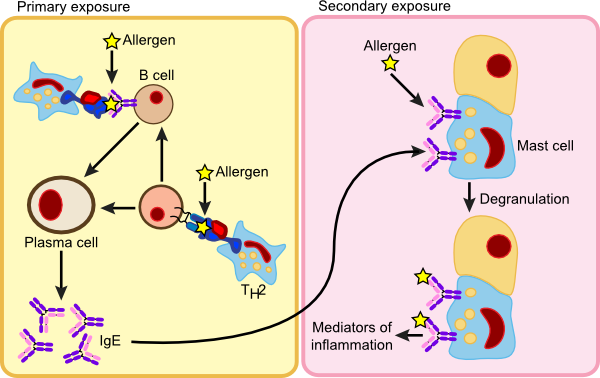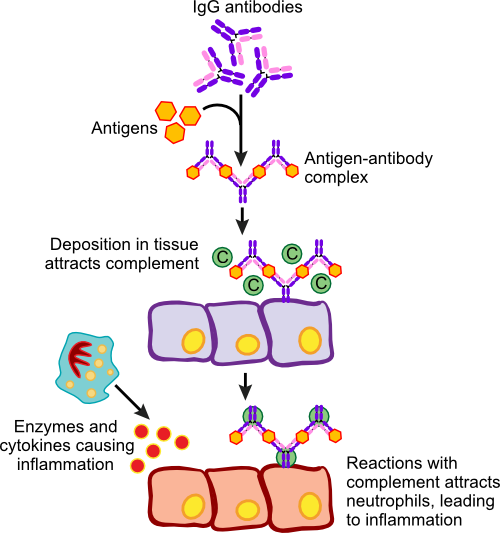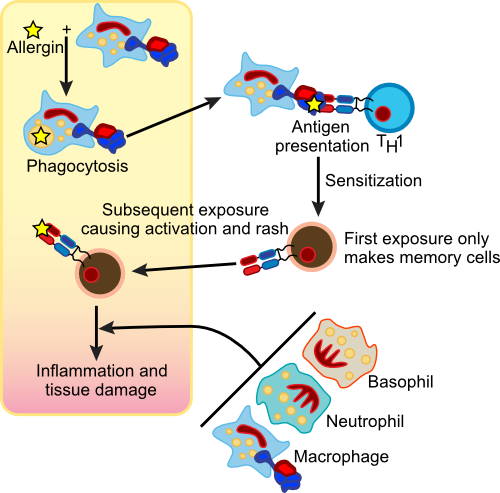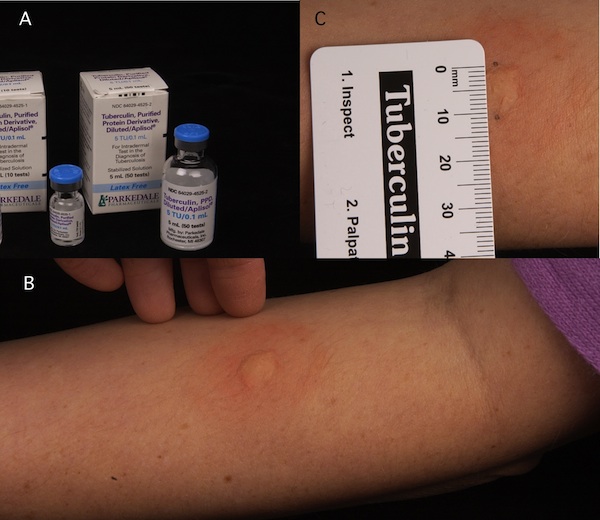Contact Us
Latest News
- Clues beginning to emerge on asymtomatic SARS-CoV-2 infection
- Back in November of 2020, during the first wave of the COVID-19 pandemic, I was teaching an in-person microbiology laboratory. One of my students had just been home to see his parents, and they all c…
- Read more
- Could there maybe be better uses of genetics and probiotics?
- Professor Meng Dong and his laboratory have created a probiotic that can metabolize alcohol quickly and maybe prevent some of the adverse effects of alcohol consumption. The scientists cloned a highl…
- Read more
- ChatGPT is not the end of essays in education
- The takeover of AI is upon us! AI can now take all our jobs, is the click-bait premise you hear from the news. While I cannot predict the future, I am dubious that AI will play such a dubious role in…
- Read more
- Fighting infections with infections
- Multi-drug-resistant bacterial infections are becoming more of an issue, with 1.2 million people dying of previously treatable bacterial infections. Scientists are frantically searching for new metho…
- Read more
- A tale of two colleges
- COVID-19 at the University of Wisconsin this fall has been pretty much a non-issue. While we are wearing masks, full in-person teaching is happening on campus. Bars, restaurants, and all other busine…
- Read more
( 37353 Reads)
None Max
Learning Objectives
- Understand the nature of allergies.
- Describe the four classes of allergic reactions.
- Understand the nature of autoimmune disease.
- Explain how autoimmune diseases can be triggered.
The immune system is amazingly good at protecting the body against the numerous pathogens that challenge us, but immunity also makes mistakes that can cause serious health problems. A common mistake begins when the immune system recognizes a foreign protein that does not pose any threat, sometimes raising a violent immune response. We are of course talking about allergic responses. Rarely, the immune system recognizes self-proteins and begins to attack the body's own tissues, setting the stage for autoimmune diseases. In this section, we will examine what is happening in allergic response and autoimmune diseases at the cellular level.
Allergies
Allergies are responses to foreign molecules that are in our bodies. The problem here is that the foreign molecule does not pose any threat and in many cases, our immune systems suffer chronic exposure to these antigens (called allergens in this context) for long periods of time. This results in an exaggerated (and detrimental) immune response that causes tissue damage. The first exposure to allergen activates the immune response, but it is the second and subsequent exposures that result in the symptoms we associate with allergies. In susceptible individuals, these allergens cause sneezing, coughing, itchy and, watery eyes and sometimes hives. Allergic reactions can be immediate or delayed and the rate and types of reaction indicate different immune responses. Peter Gell and Robert Combs developed a system in 1963 to classify these different reactions and this classification was later found to correlate with four different molecular pathways that lead to allergic responses. The four types were sensibly given the names Type I, II, III and IV hypersensitivity.
Anaphylactic Hypersensitivity (Type I)
Type I hypersensitivity or anaphylactic reactions are characterized by an immediate reaction to the offending allergen upon second contact. This is one of the more common types of allergies and there is a hereditary predisposition for anaphylactic reactions. The process itself involves B cells, mast cells and basophils. It appears that these individuals mount a vigorous immune defense against something that is not harmful, whereas the healthy immune system would not react so strongly. Figure 16.14 shows the steps in an anaphylactic reaction.

Figure 16.14. An Anaphylactic Reaction. On initial exposure to an allergen, the immune system stimulates B cells that then synthesizes IgE. The IgE migrates through the body and inserts into Mast cells. Upon second exposure, the allergen binds to the IgE, causes the Mast cells to degranulate and dump a collection of substances called the mediators of inflammation. The ensuant reaction can be violent and life-threatening.
During the first exposure to allergen, contact is made with B cells that differentiate and produce IgE antibody. The IgE against the allergen is released into the bloodstream and eventually binds to Fc receptors on mast cells and basophils. The mast cells are now sensitized, lying in wait for the second exposure. Upon contact with allergen a second time, it now attaches to IgE present on mast cells causing degranulation. On the cellular level, the granules present in the cytoplasm migrate to the cellular membrane and spill out their contents into the surrounding area. This results in the release of histamine, slow reacting substance of anaphylaxis (SRS-A), heparin, prostaglandins, platelet-activation factor (PAF), eosinophil chemotactic factor of anaphylaxis and proteolytic enzymes. This cocktail of proteins are the mediators of inflammation and they trigger a number of physiological responses including smooth muscle contraction, an increase in vascular permeability and mucous secretion.
In its most severe form, systemic anaphylaxis, there is a generalized response. Exposure to allergen causes an immediate, large amount of mast cell response over a short period of time. This results in large concentrations of the mediators of inflammation being released all at once. Individuals experiencing systemic anaphylaxis have trouble breathing due to smooth muscle contraction causing the closing of the bronchioles in the lungs. Arterioles also dilate, resulting in a drop in blood pressure and capillary permeability that causes a loss of fluid into tissues. Victims of this response can die within minutes from reduced blood return through the veins, asphyxiation, low blood pressure and circulatory collapse leading to shock. Quick treatment with epinephrine (increases blood flow and inactivates mast cells) and antihistamines (combat histamines) is essential to prevent death. Common allergens in this type of reaction are penicillin, passively administered antisera and insect venom from bees or wasps.
Localized anaphylaxis (atopic allergy) is a less severe form of anaphylaxis, whose symptoms depend primarily upon how the allergen enters the body. In hay fever (allergic rhinitis) the allergen enters the upper respiratory tract. Common allergens in hay fever include pet dander, pollen, fungal spores and household dust mites. Exposure to these particles causes the typical symptoms of hay fever, i.e., runny nose, itchy eyes, coughing and sneezing, most of which are indicative of the action of mast cells. Treatment typically involves the use of antihistamines to block the action of histamine released by mast cells.
Bronchial asthma results when the site of immunological response is the lower respiratory tract. The same allergens that irritate the upper respiratory tract in this case cause the symptoms of asthma. Mucus accumulates in the alveoli (air sacs) of the lungs and smooth muscle contraction of the bronchi narrows the airways and causes the characteristic wheezing of asthma. Bronchodilators that relax the bronchial muscles and expectorants that clear mucous plugs in the lungs can relieve most of the symptoms of asthma, but it is still a serious illness that can be fatal if treatment is delayed for too long.
A third type of localized anaphylaxis can be caused by allergens that enter through the digestive tract. Eruptions of the skin called hives are a strong indication of a true food allergy. Once a food allergy is established, it is usually permanent and the only option is to diminish the reaction with antihistamines or to avoid the suspect food altogether. Wheat, peanuts, soybeans, cow's milk, eggs and less often shellfish are common causes of food allergies.
Skin testing can be done to identify the cause of common allergies. These tests consist of inoculation with small amounts of potential allergens and after a suitable incubation period (usually 24 hours), observation for the appearance of a hard, red welt indicating a positive response. Once the responsible allergen is known, the individual has three choices. The first and most obvious is to avoid the allergen and for most food allergies, this is the preferred choice. For allergens that are difficult or impossible to avoid (e.g., pollen, mold, dust mites etc.), treatment with antihistamines is useful. In severe cases, where the first two choices are unsatisfactory, it is sometimes possible to desensitize an individual by repeated injections with the offending allergen. These subcutaneous injections actually cause the elicitation of a second immune response that raises IgG antibodies to the allergen. The desensitization works because the IgG is able to react with the allergen and remove it before the IgE on the mast cells can react with it. Suppressor T cells may also play a role in desensitization.
Cytotoxic Hypersensitivity (Type II)
Type II hypersensitivity involves the destruction of entire cells. Antigens on the surface of the cells in question stimulate the production of IgM and IgG. The IgM and IgG then bind to the tissue, leading to activation of the complement system through the classical pathway. Complement then precipitates an inflammatory response recruiting neutrophils, eosinophils, macrophages/monocytes, natural killer cells and platelets to the area. This creates an intense immune response that results in the death of the target cells. Cytotoxic responses are immediate and a common example of this type of reaction is when a patient is given the incorrect blood type during a transfusion.
Immune Complex-Mediated (Type III) Hypersensitivity
Immune complex-mediated (Type III) hypersensitivity is characterized by the formation of immune antigen-antibody complexes that accumulate in various tissues. Under normal circumstances, monocytes remove these immune complexes, but in the presence of excess antigen, they overwhelm the body's ability to clear them. The accumulation of these complexes activates the complement cascade and leads to undesirable inflammation and damage to the surrounding tissue. Accumulation of type III hypersensitivity complexes is most commonly observed in the kidneys, blood vessels, the joints and the skin. Figure 16.15 depicts an immune complex hypersensitivity.

Figure 16.15. Immune Complex-Mediated Hypersensitivity. The chronic exposure to an antigen causes the formation of immune complexes between the antigen and antibodies raised against it. These accumulate in specific areas of the body (kidney, blood vessels, joints and skin) and elicit an inflammatory response that damages the surrounding tissue.
Three types of diseases can lead to immune complex hypersensitivity. First, chronic infection with a virus, bacteria or protozoa, along with a weak antibody response, eventually leads to the deposition of immune complexes (conglomerations of antibody and antigens) and trigger this allergic response. A second type of this condition stems from antibody raised against self-antigens. Since the antigens are not removed in this case, immune complexes are constantly being formed and this is one of the major damaging side effects of autoimmune disease such as systemic lupus erythematosus and rheumatoid arthritis. Third, constant chronic exposure to a particular antigen at a body surface can cause type III hypersensitivity reactions. Farmer's lung is an example of this type of disease. Repeated exposure to fungal spores present in moldy hay elicits an immune response and results in the formation of IgG antibody directed against the spores. Subsequent exposure causes the formation of IgG-spore immune complexes that accumulate in the alveoli of the lungs and cause inflammation leading to lung tissue damage. Other examples of type III hypersensitivity and the allergen that precipitates the problem include, cheese washer's disease (Penicillium casei), Furrier's lung (fox fur protein) and Maple bark stripper's disease (Cryptostroma spores).
Cell-Mediated (Delayed) Hypersensitivity (Type IV)
Cell-mediated or delayed hypersensitivity is related to the T cell response to an allergen. The major factor causing the delay is the time required for T cells that respond to the allergen to migrate to and accumulate at the site of exposure. Delayed hypersensitivity reactions typically begin to appear 24 hours after exposure and reach their maximum intensity in 1 to 3 days. Antigens from microorganisms as well as certain chemicals can cause these types of reactions. Figure 16.16 summarizes the steps in a cell mediated allergic reaction.

Figure 16.16. Cell-Mediated Hypersensitivity. In this type of allergic reaction, T cells react to the allergen and mobilize the rest of the immune system. An immune reaction, including inflammation, causes the symptoms associated with cell-mediated hypersensitivity and can lead to extensive host tissue damage.
In delayed type hypersensitivity, the allergen is first phagocytized by a macrophage and presented to T cells. The T cells that cause this type of response had been given the name delayed-type hypersensitivity T cells or TDTH cells, but are now know to be TH1 cells. TH1 cells activated by the allergen respond by proliferating, migrate to the area of allergen and then release cytokines, which attract lymphocytes, macrophages and basophils to the tissue. The resulting immune response can cause extensive tissue damage.
Delayed type hypersensitivity reactions are familiar to anyone who has suffered after brushing up against poison ivy or poison oak. In this case, the cause of the reaction is contact with catechols present in the oily leaves of the poison ivy and poison oak plant. Catechols on the skin result in the formation of a characteristic rash with intense itching, swelling and blistering. The catechols are low molecular weight chemicals (haptens) that are capable of combining with a protein to form an antigen. Contact with leaves of the poison ivy plant causes some of the catechols to rub off and stick to lipids in the skin and eventually combine with a skin protein to form the allergen. This then sensitizes the TH1 cells. During initial exposure, only TH1 memory cells are created and no dermatitis occurs. In second and subsequent exposures, the TH1 memory cells become active, recruit other immune cells and cause the characteristic rash. Soaps, cosmetics and metals (especially nickel) can also cause this type of contact dermatitis in sensitive individuals.
Important chronic diseases involve tissue destruction by delayed type hypersensitivity reactions. Certain viruses, mycobacteria, protozoa and fungi are capable of causing these immune responses. In all cases, there is chronic stimulation of T cells leading to significant tissue destruction. Infectious diseases such as leprosy, tuberculosis, leishmaniasis, candidiasis and herpes simplex are associated with type IV hypersensitivity. Delayed type hypersensitivity is the basis for skin tests that detect previous exposure to etiologic agents of tuberculosis, leprosy and histoplasmosis, and other diseases (Figure 16.17).

Figure 16.17. Skin Testing. Pictures of skin testing done to determine the allergens that cause an immune response. Tuberculin allergen is available commercially (A). A small amount of allergen is inject under the skin. If an individual is allergic to a substance an immune response will manifest in the form of redness and swelling (B). The size of the reaction is measured and this is used to gauge a person’s exposure to tuberculosis (C). This individual has been exposed to TB in the past. This is an example of a Type IV allergic response. (Source: Centers for Disease Control and Prevention)
Autoimmune Diseases Involve the Host Immune System Attacking Host Proteins
Under normal conditions, the body is able to distinguish self from non-self antigens. This immune tolerance develops by several mechanisms as described earlier in the chapter. When this tolerance breaks down, autoimmunity occurs, which is characterized by an immune response against antigens present on host tissue. As an individual ages, various types of infections and other encounters with foreign antigens can precipitate the formation of antibodies that react against self-antigens. These are usually benign and under normal circumstances disappear as soon as the offending antigen is removed. Autoimmune disease is often precipitated by the activation of self-reactive T and B cells following stimulation by infection or exposure to certain antigens present in the environment. These illnesses can be extremely debilitating and cause significant suffering in afflicted individuals. Table 16.3 summarizes various autoimmune diseases.
Table 16.3. Various Autoimmune Diseases
| Disease | Tissue affected | Molecular details |
| Type 1 diabetes | Pancreas | Attack of islet cell cytoplasm and surface antigens by cell-mediated immunity and antibodies |
| Male infertility (some types) | Testes | Reaction against surface antigens on spermatozoa by antibodies. |
| Myasthenia gravis | Neuromuscular junction | Antibody against the acetylcholine receptor on the surface of these cells |
| Graves' disease | Thyroid gland | Antibody against thyroid-stimulating hormone receptor |
| Multiple sclerosis | Nerves | Attack of immune system against the myelin sheath of nerves |
| Rheumatoid arthritis | Joints | Reaction of IgG with collagen |
| Idiopathic thrombocytopenic purpura | Platelets | Attack of platelets by antibody resulting in their phagocytosis |
| Systemic lupus erythematosus | Various | Antibodies against DNA, nucleoprotein, cytoplasmic soluble antigen and an array of other antigens. |
| Ulcerative colitis | LPS | Unknown |
A number of autoimmune disease are caused by immune responses to various tissues of the body.
Autoimmune disease is mitigated by four factors.
- There seems to be a genetic predisposition for some autoimmune diseases. For example, there is a correlation between a person's susceptibility to Graves' disease and the presence of a specific antigenic determinant on the MHC molecule. Genes encoding MHC molecules actually have a number of alleles in humans, and as a result, their protein sequence is not the same from person to person.
- Viral or bacterial infections of some sorts can precipitate autoimmune disease. It seems an infection with certain pathogens triggers an immune response that cross-reacts with antigens present in the body. One emerging example is Guillain-Barré syndrome where at least some of the cases appear to be caused by a previous infection with Campylobacter jejuni. After infection, the immune system begins attacking the nervous system causing weakness, sometimes to the point of impeding breathing.
- Endocrine hormones (hormones secreted directly into the blood or lymph) affect the severity of autoimmune disease. Estrogen promotes autoimmune reactions, while androgen inhibits them through yet unknown mechanisms and this partially explains the predominance of autoimmune disorders in women.
- Stress and neurotransmitters (those with effects on the nervous system) can cause physiological changes that make autoimmune diseases worse.
For example, autoimmune diseases cause a progressive degeneration of the tissues attacked by the immune system. In systemic lupus erythematosus, the immune response is errantly directed against a number of different self-antigens including DNA, nucleoproteins and blood-clotting factors. The illness results in the accumulation of antigen-antibody complexes that migrate to the kidneys and joints causing immune complex-mediated hypersensitivity. If untreated, this leads to kidney failure and severe arthritis. Type 1 diabetes is an autoimmune disease, where the immune system responds to the cytoplasm and surface proteins present on islets cells of the pancreas. Destruction of these cells results in the inability to make insulin. Many of these diseases are extremely difficult to treat.
Key Takeaways
- Allergies are caused when the immune system mistakenly reacts to a foreign antigen that is no threat to the body.
- There are four classes of allergic reactions: anaphylactic hypersensitivity, cytotoxic hypersensitivity, immune complex-mediated hypersensitivity and cell-mediated hypersensitivity.
- A second mistake that can be made by the immune system is the recognition of self-antigens. This causes autoimmune diseases that are characterized by constant overstimulation of the immune system.
- Autoimmune diseases are often triggered by infection or exposure to certain antigens in the environment.
Quickcheck 16-6
Warning, you must be logged in to be able to have your exam graded. Answer the questions below and if you are a registered user of the site you will see a Grade Exam button. Click it to have your exam graded.